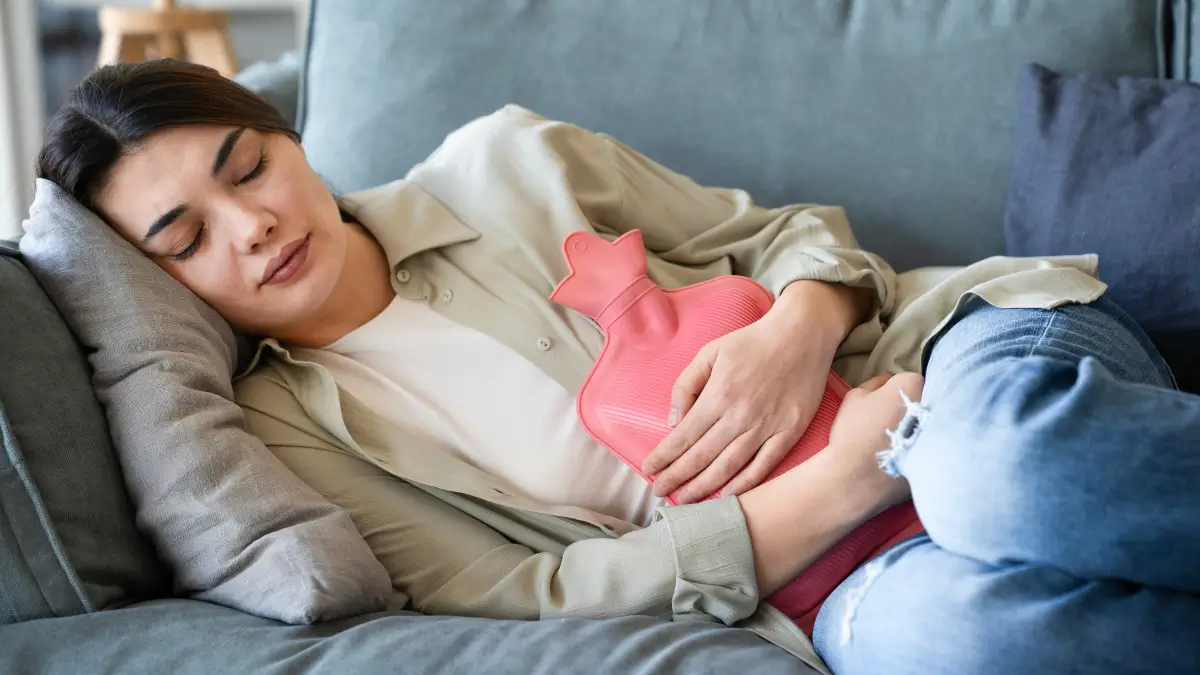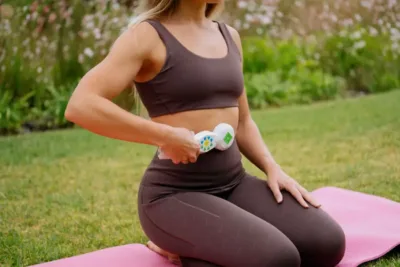For many women, premenstrual symptoms are a regular – if unwelcome – part of life. Cramps, mood swings, low energy, and disrupted sleep can make even routine days feel overwhelming.
Understanding PMS: A New Perspective on Hormonal Health
For many women, premenstrual symptoms are a regular—if unwelcome—part of life. Cramps, mood swings, low energy, and disrupted sleep can make even routine days feel overwhelming. And while over-the-counter pain relief or hormonal medications offer short-term help, they often don’t address the deeper patterns behind the symptoms.
In recent years, there’s been growing interest in how hormonal fluctuations, inflammation, and energy deficits in the body contribute to PMS. This broader view is opening up new ways to support the menstrual cycle—not just by masking discomfort, but by working with the body’s natural processes to restore balance.
One of the therapies gaining attention for its gentle, systemic effects is coMra therapy—a non-invasive treatment that combines low-level laser, magnetism, and color light to support healing at the cellular level. In this article, we’ll explore what’s really happening during PMS, the role inflammation and energy play in those experiences, and how coMra fits into a more holistic approach to women’s health.
- Visit the store to browse coMra devices
- Download the User Guide for detailed information on protocols described in this article
What’s Really Going On During PMS?
PMS is often described as a “hormone problem,” but the reality is more complex. In the second half of the menstrual cycle—after ovulation—your body undergoes a shift in hormone levels, particularly estrogen and progesterone. These changes affect not just the reproductive system, but also the nervous system, energy metabolism, and inflammatory pathways.1
For some women, this shift triggers a cascade of symptoms: cramps, breast tenderness, digestive issues, fatigue, anxiety, or low mood. While hormonal fluctuation is normal, the intensity of these symptoms may reflect something deeper—like chronic stress, unresolved inflammation, or depleted cellular energy.
Recent studies have linked PMS to low-grade systemic inflammation, marked by elevated levels of C-reactive protein (CRP) in women experiencing moderate to severe symptoms.2 Inflammation can heighten pain sensitivity and disrupt neurotransmitters like serotonin and GABA – both of which play key roles in mood regulation.3
At the same time, research into the cellular basis of fatigue and pain suggests that many cells – especially in the brain and reproductive organs – may be functioning with reduced ATP production during times of physiological stress.4 When the body is low on energy and high on stress signals, even subtle hormonal changes can feel overwhelming.
How coMra Therapy Supports Hormonal Balance and PMS Relief
coMra therapy (Coherent Multi-Radiance Therapy) uses a unique coherent combination of low-level laser, magnetism, colour light, and ultrasound (in some devices) to support healing—gently and systematically. For women dealing with PMS and hormonal fluctuations, this approach works on multiple levels:
1. Supports Hormonal Regulation and Cycle Rhythm
coMra therapy uses targeted protocols to stimulate endocrine and nervous system balance. Treatments help regulate hormonal feedback loops, especially those involving the ovaries, thyroid, adrenals, and pituitary. This makes it especially useful for PMS, mood changes, and irregular cycles.
The main protocol for this is ENDOCRINOLOGY 2, which is applied during the second half of the menstrual cycle. For more complex issues—like ovarian cysts, mid-cycle pain, or cycle-related infertility – GYNAECOLOGY 2 may also be recommended.
2. Reduces Inflammation and Relieves Pain
Low-grade inflammation is a known aggravator of menstrual symptoms. It can heighten sensitivity, increase cramping, and amplify pain signals throughout the body. coMra therapy helps calm this inflammatory response by modulating immune function and improving circulation – providing natural, drug-free relief.
By treating the lower abdomen and lower back (common areas for menstrual pain), coMra also helps relax smooth muscle tissue and reduce nerve irritation. Many women experience a noticeable reduction in cramps, backache, and pelvic tension—even during their first few sessions.
3. Restores Cellular Energy and Vitality
Using infrared laser and magnetism, coMra stimulates the production of ATP – the energy currency of the cell. When energy levels are restored at the cellular level, recovery is faster, fatigue decreases, and the body is better able to maintain balance under stress.
4. Improves Emotional Resilience and Stress Response
Hormonal shifts don’t just affect the body—they affect how we feel, think, and relate to others. coMra’s UNIVERSAL 5 (Emotional/Adrenal Support) protocol is designed to support mood regulation, improve sleep, and calm emotional reactivity by working with the adrenal glands, nervous system, and head points.
How to Use coMra for PMS and Hormonal Balance
coMra therapy is designed for use at home, with structured protocols guiding treatment placement and timing. For PMS and hormonal support, start with:
ENDOCRINOLOGY 2 – the core protocol for hormone balancing. Use daily from day 13–15 of your cycle until your next period begins.
- UNIVERSAL 5 (Emotional/Adrenal Support) – supports mood, sleep, and stress resilience.
- UNIVERSAL 3 (Blood) – optional add-on to boost circulation and overall energy.
- GYNAECOLOGY 2 – for issues like irregular cycles, ovary cysts, or fertility-related hormone disruption.
For cramping or physical discomfort, you can also use targeted treatments to the lower abdomen or back. In more intense cases, we recommend the TRAUMATOLOGY 2 protocol, which treats muscular pain and inflammation using a variable frequency setting.
Ready to explore your options?
Whether you’re looking for relief from monthly discomfort, more emotional balance, or long-term support for your cycle, coMra offers a gentle, holistic way to care for your health.
Treatments are simple to follow, take only a few minutes a day, and can be done from the comfort of home.
- Download the official coMra User Guide here for complete instructions on all protocols.
- Browse coMra devices here
References:
1 Gordon JL, Girdler SS. “Hormone replacement therapy in the treatment of perimenopausal depression.” Curr Psychiatry Rep. 2014.2 Bertone-Johnson ER et al. “Inflammation and premenstrual syndrome: a prospective study.” J Women’s Health. 2014.3 Yonkers KA, O’Brien PM, Eriksson E. “Premenstrual syndrome.” Lancet. 2008.4 Hamblin MR. “Mechanisms and applications of the anti-inflammatory effects of photobiomodulation.” Photochemistry and Photobiology. 2017; 94(2):199–212.


 ENDOCRINOLOGY 2 – the core protocol for hormone balancing. Use daily from day 13–15 of your cycle until your next period begins.
ENDOCRINOLOGY 2 – the core protocol for hormone balancing. Use daily from day 13–15 of your cycle until your next period begins.

